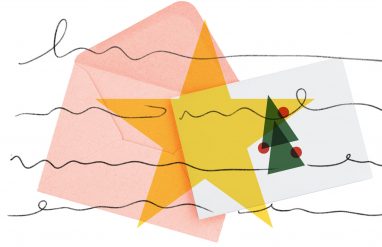Prep for high school by practicing these writing activities
Most middle school students aren’t fully prepared for high-school writing assignments. Help your middle-schooler get ready for high-school essays and tests with these engaging activities.
Writing narratives
Read this article about famous grumps in literature.
Write a short story in the Thesaurus.com Writing Tool about navigating our current situation with one of those grumps as the main character.
- Decide if you want to create a happy or tragic ending for your story.
Family activity:
As a family, look at some of the articles recently published on our editorial site and pick out one that could possibly be developed into a TV show.
- Imagine the main character and how the story might continue over its seasons.
These activities address CCSSI Writing Standard: Write narratives to develop real or imagined experiences or events using effective technique, relevant descriptive details, and well-structured event sequences.
Writing a story
Read this article to understand the points of view that authors use when telling a story.
- Look up the word omniscient to understand the 3rd person omniscient point of view.
- List as many book titles as you can that tell their story from this perspective.
Describe a day in your home from each of the different perspectives.
- See how the story changes depending on how you narrate it from the unique point of view.
Family activity:
Have each family member write about a moment you all shared together from their perspective.
- See if the stories and memories match up as you read all your stories aloud!
These activities address CCSSI Reading Standard: Determine an author’s point of view or purpose in a text and explain how it is conveyed in the text.
Writing thesis statements
Read this article on the different types of thesis statements.
Find and evaluate the thesis statements in these articles:
- Is “Emergency” The Right Word To Describe What’s Happening At The Border?
- Has The Word “Expert” Lost Its Meaning?
Create your own thesis statement that answers one of these writing prompts.
- You can write in Thesaurus.com’s Writing Tool.
Family activity:
Watch a commercial together.
- See if you can find the “thesis” of the advertisement and where the advertisers try to lay out the evidence in visual form.
- Have everyone write down their answer and then read aloud the thesis statements you found after the commercial is done to see who you all think got closest.
These activities address CCSSI Reading Standard: Delineate and evaluate the argument and specific claims in a text, including the validity of the reasoning as well as the relevance and sufficiency of the evidence.
Performing character analysis
Read this slideshow about character names that became so famous their names entered the English language. Choose one of the characters and read the texts they originated from while keeping in mind why they might have become such iconic characters.
Now it’s your turn to come up with an iconic character! Read this article about about picking names for characters.
- Can you create a story about a character with a specific personality? Who knows, maybe your character’s name will eventually enter the lexicon!
- Write your story in the Thesaurus.com Writing Tool.
Family activity:
Show pictures of your friends or random people to your family members. Try to have them guess what kind of name would suit the person based on their perceived looks and personality. Ask them why they picked each name.
These activities address CCSSI Reading Standard: Analyze how complex characters (e.g., those with multiple or conflicting motivations) develop over the course of a text, interact with other characters, and advance the plot or develop the theme.
Researching sources
Read this article on the difference between primary and secondary sources. See if you can find a primary source on a topic that interests you. An example would be historical data or documents, original lyrics, or a novel.
- Here are some ideas to research in case you need help finding a topic.
Find a secondary source on the same topics. An example would be a newspaper article or encyclopedic information.
Remind yourself what subjective means here by reading the definition. Then determine how subjective the sources you found are.
- What point of views are being expressed in your primary and secondary sources? Do you agree with them?
Family activity:
Find a primary source that was published or created on each family member’s birth date. Compare the different writing, events, or creations you find. Can you find any connection to yourself or your family from the past?















